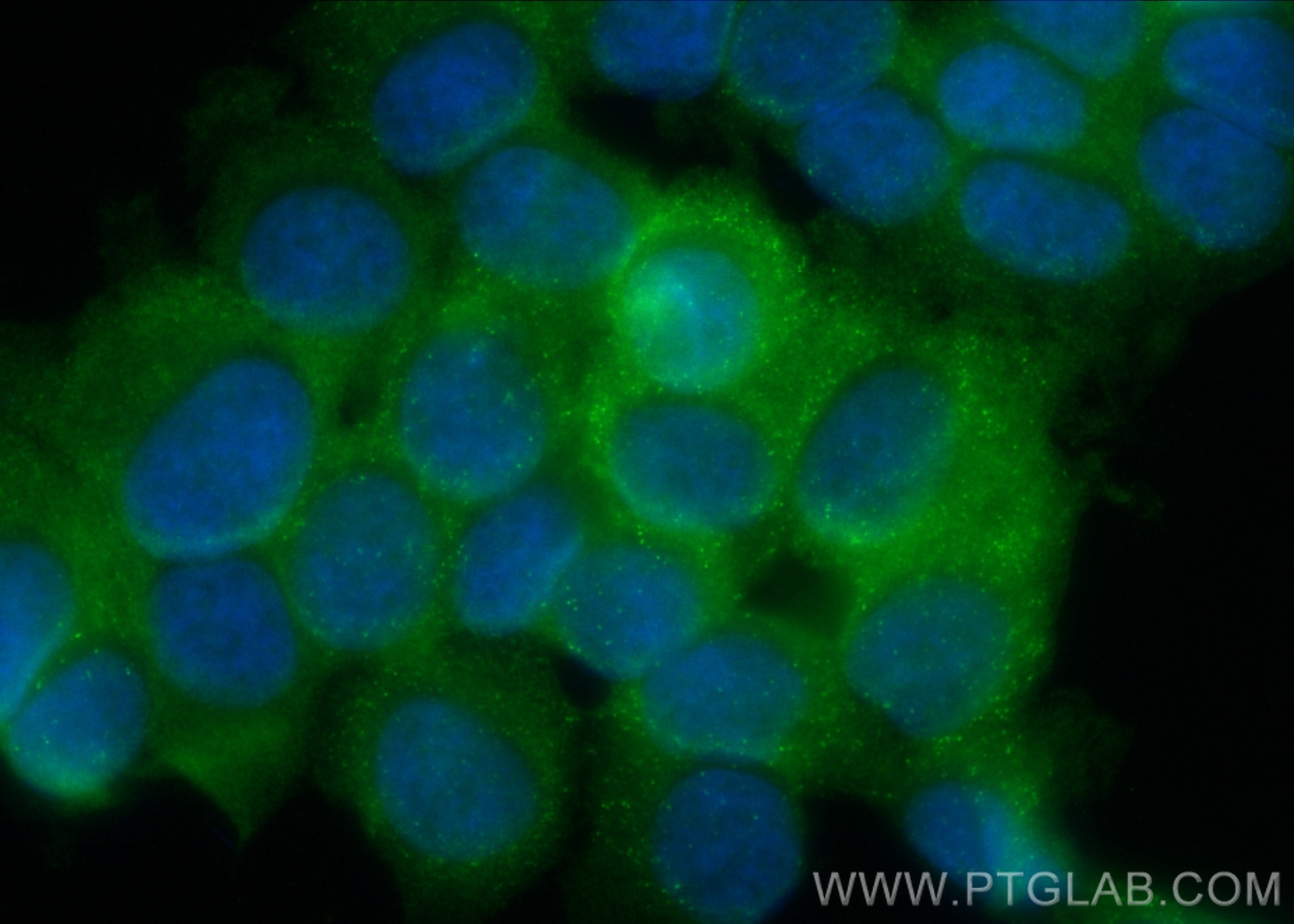Validation Data Gallery
Tested Applications
| Positive IF/ICC detected in | MCF-7 cells |
Recommended dilution
| Application | Dilution |
|---|---|
| Immunofluorescence (IF)/ICC | IF/ICC : 1:50-1:500 |
| It is recommended that this reagent should be titrated in each testing system to obtain optimal results. | |
| Sample-dependent, Check data in validation data gallery. | |
Product Information
CL488-83497 targets HARS in IF/ICC applications and shows reactivity with human samples.
| Tested Reactivity | human |
| Host / Isotype | Rabbit / IgG |
| Class | Recombinant |
| Type | Antibody |
| Immunogen | HARS fusion protein Ag9333 相同性解析による交差性が予測される生物種 |
| Full Name | histidyl-tRNA synthetase |
| Calculated molecular weight | 509 aa, 57 kDa |
| Observed molecular weight | 52 kDa |
| GenBank accession number | BC011807 |
| Gene Symbol | HARS |
| Gene ID (NCBI) | 3035 |
| RRID | AB_3673260 |
| Conjugate | CoraLite® Plus 488 Fluorescent Dye |
| Excitation/Emission maxima wavelengths | 493 nm / 522 nm |
| Form | Liquid |
| Purification Method | Protein A purification |
| UNIPROT ID | P12081 |
| Storage Buffer | PBS with 50% glycerol, 0.05% Proclin300, 0.5% BSA , pH 7.3 |
| Storage Conditions | Store at -20°C. Avoid exposure to light. Stable for one year after shipment. Aliquoting is unnecessary for -20oC storage. |
Background Information
HARS is a cytoplasmic enzyme that belongs to the class II family of aminoacyl-tRNA synthetases. The enzyme is responsible for the synthesis of histidyl-transfer RNA, which is essential for the incorporation of histidine into proteins. HARS is located in a head-to-head orientation with HARSL on chromosome five, where the homologous genes share a bidirectional promoter. The gene product is a frequent target of autoantibodies in the human autoimmune disease polymyositis/dermatomyositis.
Protocols
| Product Specific Protocols | |
|---|---|
| IF protocol for CL Plus 488 HARS antibody CL488-83497 | Download protocol |
| Standard Protocols | |
|---|---|
| Click here to view our Standard Protocols |
